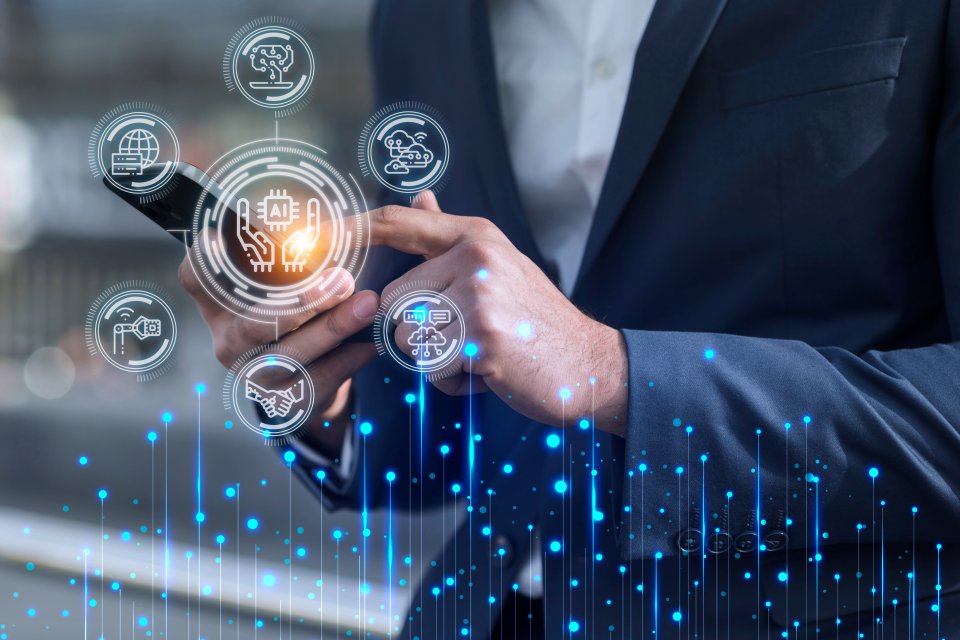
In the rapidly evolving landscape of technology, the convergence of IoT and Artificial Intelligence (AI) has emerged as a powerful force reshaping industries, businesses, and daily life. This article delves into the symbiotic relationship between IoT and AI, exploring how they complement each other, their applications across various sectors, and the implications for the future of innovation.
Understanding IoT and Artificial Intelligence
IoT: Connecting the Physical World
The Internet of Things (IoT) is not just about connecting devices; it’s about enabling a new level of interaction and insight into the physical world around us. From smart thermostats that adjust to our preferences to wearable fitness trackers that monitor our health, IoT devices are seamlessly integrating technology into our daily lives. By collecting and analyzing data from sensors embedded in these devices, IoT enables us to make more informed decisions, optimize processes, and create personalized experiences that enhance convenience and efficiency.
Artificial Intelligence: Intelligence Amplified
Artificial Intelligence (AI) is the driving force behind the transformation of raw data into actionable insights. It encompasses a wide range of technologies, from machine learning algorithms that can recognize patterns in data to natural language processing systems that can understand and respond to human language. AI enables machines to learn from experience, adapt to new information, and perform tasks that traditionally required human intelligence. As AI continues to evolve, its potential to revolutionize industries and reshape the way we live and work is virtually limitless.
The Synergy between IoT and Artificial Intelligence
Data Integration and Analysis
The true power of IoT lies in its ability to generate vast amounts of data from interconnected devices. However, the value of this data lies in its analysis and interpretation. This is where AI comes in. By applying machine learning algorithms to IoT data streams, AI can uncover hidden patterns, detect anomalies, and derive actionable insights in real-time. Whether it’s predicting equipment failures in industrial settings or identifying trends in consumer behavior, the combination of IoT and AI enables organizations to unlock the full potential of their data and drive informed decision-making.
Enhanced Automation and Decision-Making
Automation is at the heart of IoT, enabling devices to perform tasks without human intervention. However, the true potential of automation lies in its intelligence. By integrating AI capabilities into IoT systems, devices can not only automate routine tasks but also make intelligent decisions based on real-time data and analysis. For example, in a smart home environment, AI algorithms can learn user preferences and adjust lighting, temperature, and other settings accordingly, creating a personalized and comfortable living space. Similarly, in industrial settings, AI-powered IoT systems can optimize production processes, minimize downtime, and improve overall efficiency.
Personalization and User Experience
In an era of hyper-personalization, meeting the individual needs and preferences of users is paramount. IoT and AI together enable highly personalized experiences that cater to the unique requirements of each user. From personalized product recommendations based on past behavior to adaptive user interfaces that anticipate user needs, the combination of IoT and AI transforms static, one-size-fits-all experiences into dynamic, tailored interactions. By understanding user behavior, preferences, and context, IoT and AI create immersive and engaging experiences that drive customer satisfaction and loyalty.
Applications of IoT and AI Across Industries
Healthcare
In healthcare, the combination of IoT and AI is revolutionizing patient care, diagnosis, and treatment. IoT devices such as wearable sensors and remote monitoring systems collect real-time data on patient vital signs, while AI algorithms analyze this data to detect anomalies, predict disease progression, and recommend personalized treatment plans. From remote patient monitoring to early disease detection, IoT and AI are transforming healthcare delivery, improving patient outcomes, and reducing healthcare costs.
Manufacturing and Industry 4.0
In the manufacturing sector, IoT and AI are driving the transition to Industry 4.0, characterized by interconnected, intelligent production systems. IoT sensors embedded in machinery and equipment collect data on performance, energy consumption, and maintenance needs, while AI algorithms analyze this data to optimize production schedules, predict equipment failures, and enable predictive maintenance. By harnessing the power of IoT and AI, manufacturers can improve operational efficiency, reduce downtime, and enhance product quality, ultimately driving competitive advantage in a rapidly evolving marketplace.
Smart Cities and Urban Planning
In smart cities, IoT and AI are transforming urban infrastructure, transportation, and public services. IoT sensors deployed throughout the city collect data on traffic patterns, air quality, energy consumption, and more, while AI algorithms analyze this data to optimize traffic flow, reduce congestion, and enhance energy efficiency. From intelligent transportation systems to smart energy grids, IoT and AI are enabling cities to become more sustainable, resilient, and livable, improving the quality of life for residents and fostering economic growth and innovation.
Agriculture and Precision Farming
In agriculture, IoT and AI are revolutionizing traditional farming practices, enabling farmers to optimize crop yields, minimize resource consumption, and mitigate environmental impact. IoT sensors deployed in the field collect data on soil moisture levels, temperature, humidity, and crop health, while AI algorithms analyze this data to optimize irrigation schedules, detect crop diseases, and predict yield outcomes. From precision agriculture to smart irrigation systems, IoT and AI are empowering farmers to make data-driven decisions, improve crop productivity, and ensure food security for a growing global population.
Future Trends and Challenges
Edge Computing and AI at the Edge
As the volume and velocity of IoT data continue to grow, the demand for real-time processing and analysis capabilities is driving the adoption of edge computing and AI at the edge. Edge computing enables data to be processed closer to the source, reducing latency, bandwidth requirements, and reliance on centralized data centers. By integrating AI algorithms with IoT devices at the edge of the network, organizations can achieve faster insights, greater scalability, and enhanced privacy and security, paving the way for new applications and use cases in diverse industries and environments.
Ethical and Regulatory Considerations
As IoT and AI technologies become more pervasive, addressing ethical and regulatory considerations around data privacy, security, and algorithm bias becomes increasingly critical to ensure responsible deployment and mitigate potential risks. Organizations must prioritize transparency, accountability, and fairness in the design, development, and deployment of IoT and AI systems, considering the potential impact on individuals, communities, and society as a whole. By adhering to ethical principles, fostering collaboration, and engaging stakeholders in meaningful dialogue, organizations can build trust, mitigate risks, and unlock the full potential of IoT and AI to create positive social, economic, and environmental outcomes.
Conclusion
The symbiotic relationship between IoT and Artificial Intelligence represents a paradigm shift in how we interact with technology and perceive the world around us. By harnessing the power of data-driven insights and intelligent automation, IoT and AI pave the way for unprecedented innovation, efficiency, and personalization across industries and domains. As we navigate the complexities and opportunities of this transformative partnership, it is essential to embrace ethical principles, foster collaboration, and harness the full potential of IoT and AI to create a smarter, more sustainable future for all.
Frequently Asked Questions (FAQs)
Q1: What distinguishes IoT from Artificial Intelligence (AI), and how do they work together?
IoT focuses on connecting physical devices and collecting data from the environment, while AI enables machines to learn from data, recognize patterns, and make decisions. In the symbiotic relationship between IoT and AI, IoT generates vast amounts of data, and AI processes this data to derive insights, enabling intelligent automation and decision-making.
Q2: What are some real-world applications of IoT and AI working together?
In healthcare, IoT devices collect patient data, and AI algorithms analyze this data to diagnose diseases and recommend personalized treatment plans. In manufacturing, IoT sensors monitor equipment performance, and AI predicts equipment failures to enable proactive maintenance. In smart cities, IoT collects data on traffic patterns, and AI optimizes traffic flow to reduce congestion and improve efficiency.
Q3: How does the integration of edge computing and AI at the edge enhance IoT systems?
Edge computing enables data processing closer to the data source, reducing latency and bandwidth requirements. By integrating AI algorithms with IoT devices at the edge, organizations can achieve faster insights, greater scalability, and enhanced privacy and security, enabling real-time decision-making and analysis in diverse environments.
Q4: What are the ethical and regulatory considerations surrounding the use of IoT and AI technologies?
Ethical and regulatory considerations include data privacy, security, and algorithm bias. Organizations must prioritize transparency, accountability, and fairness in the design, development, and deployment of IoT and AI systems to ensure responsible use and mitigate potential risks. Collaboration and engagement with stakeholders are essential to address societal concerns and build trust.
Q5: How can businesses leverage the symbiotic relationship between IoT and AI to drive innovation and competitiveness?
Businesses can leverage IoT and AI to optimize operations, enhance customer experiences, and unlock new revenue streams. By harnessing the power of data-driven insights and intelligent automation, organizations can improve efficiency, reduce costs, and gain a competitive edge in the digital economy.
